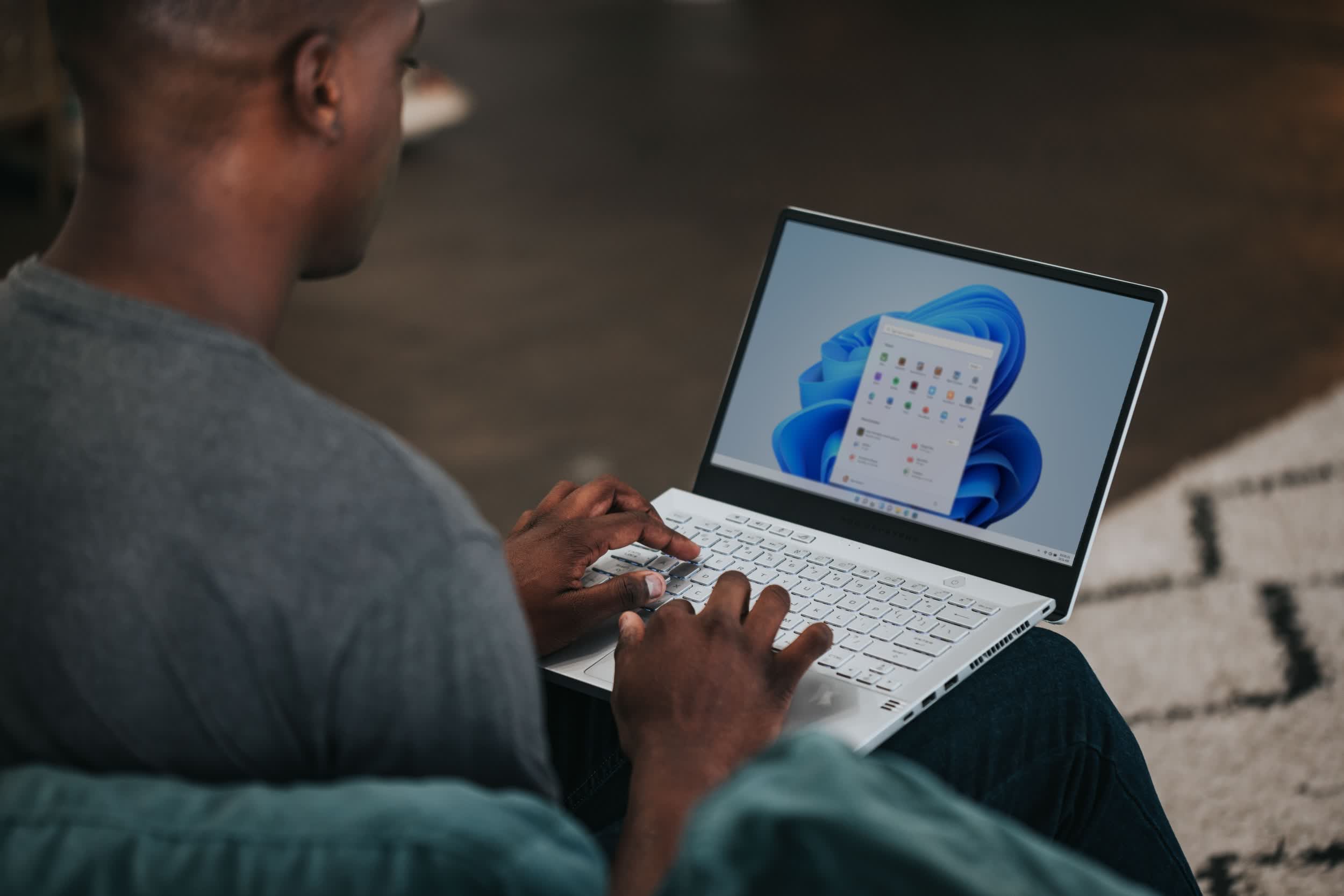Something to look forward to: Windows 11's implementation of the taskbar – one of the operating system's most fundamental elements – has been quite controversial since Windows 11 launched. A Windows researcher recently uncovered evidence of the impending return of a Windows 10 feature developers nixed for Win 11.
Windows 11 users will soon see a new taskbar setting to prevent it from combining app icons when it runs out of space. Windows 10 still has the feature, and many users requested its return when Windows 11 shipped without it. It is one of many taskbar features Microsoft incidentally confirmed with the latest Windows 11 preview build.
Windows Researcher Albacore tweeted a video demonstrating upcoming Windows 11 taskbar personalization functions that Microsoft hasn't yet mentioned. In the video, he toggles the task view and widget icons, changes the icon orientation from left to center, and customizes how the search bar appears. Albacore also mentions ungrouped items and item labels in the tweet.
Taskbar item labels (as well as ungrouped items) are indeed on their way to Windows 11 â¨
– Albacore (@thebookisclosed) April 19, 2023
Here's a demo of the current state of the feature, definitely further along than last time we looked at it
Fiddled with a few settings in the video so you can see how it reacts pic.twitter.com/7A7H0MWpJV
This week's Insider Preview blog post doesn't note these changes, and it's unclear when these features will release to more users. The latest version, build 23440, lets users hide the time and date in the system tray and diagnose network problems by right-clicking the tray. Users can also quickly check the latest insider release notes from the taskbar. Some of these features existed in previous Windows versions.
Although the Windows 11 taskbar was unpopular at launch, Microsoft has added various new features over the last year. The company adjusted the experience for touch mode, retooled the overflow function when many windows are open, and incorporated Bing's AI-powered search features. Additionally, Microsoft might soon add the ability to force-close applications by right-clicking the taskbar instead of going into the task manager.
However, one requested feature from earlier Windows editions that won't return soon is the ability to move the taskbar to the sides or top of the screen. Last year, Microsoft said it doesn't think enough users have spoken up to justify the amount of work resurrecting the movable taskbar requires. The company would have to check every app icon for compatibility. The task might become even more burdensome as Windows 11 gains more apps.
In the meantime, if the default Windows 11 taskbar doesn't have the functionality you want, you can try a third-party taskbar tool. Alternatively, follow our somewhat dated guide to making Windows 11 more like Win 10. If you need to buy Windows 11, a Professional license is currently on sale for $50.
